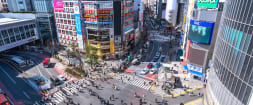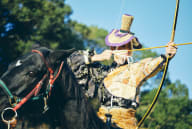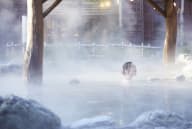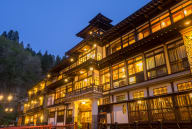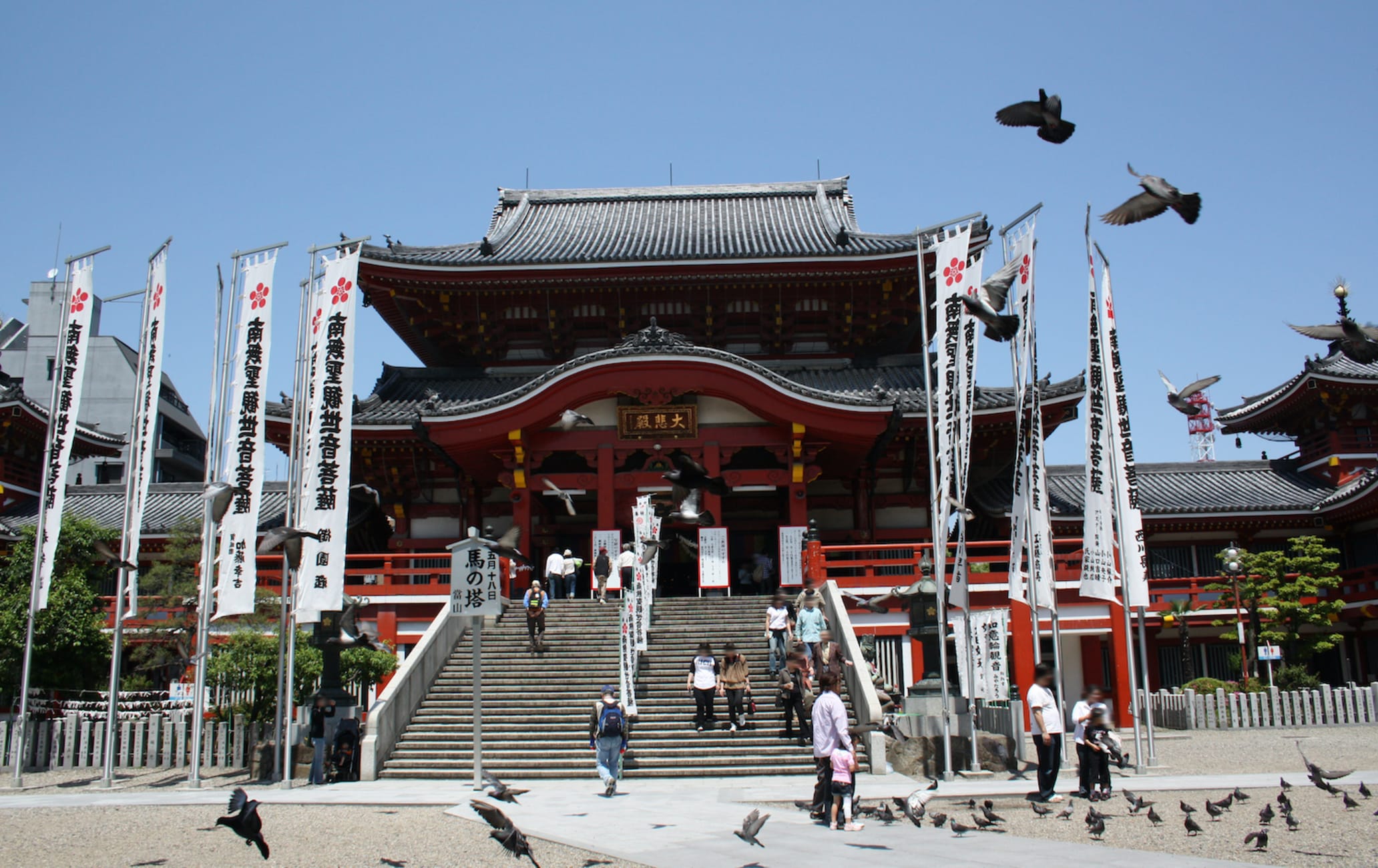ⓒNAGOYA CONVENTION & VISITORS BUREAU
Diselamatkan Oleh Seorang Shogun, Osu Kannon yang Damai Menawarkan Festival Unik, Pasar Barang Antik, dan Kuliner Internasional
Di tengah Nagoya, ibu kota yang mengagumkan, Wihara Budha Osu Kannon merupakan oasis spiritualitas bersejarah yang menjadi tempat perhentian untuk beristirahat sebelum menjelajah untuk berbelanja, bersantap, dan kehidupan malam di kota ini.
Jangan Lewatkan
- Pasar barang antik pada tanggal 18 dan 28 setiap bulan
- Memberi makan sekumpulan burung merpati yang lapar
- Athenaeum wihara yang memiliki sekitar 15.000 karya sastra
Menuju Lokasi
Wihara ini berada tepat di luar Stasiun Osu Kannon atau 12 menit perjalanan dengan kereta api bawah tanah dari Stasiun Nagoya .
Dari Stasiun Nagoya , naik kereta api bawah tanah Higashiyama line ke Stasiun Fushimi dan ganti dengan Tsurumai Line. Osu Kannon berada di perhentian berikutnya.
Sekilas Fakta
Osu Kannon adalah wihara Buddha utama di Nagoya
Wihara ini pada awalnya dibangun pada 1333 di yang saat ini adalah Prefektur Gifu
Untuk mengamankannya dari banjir yang berulang kali melanda, wihara ini dipindah ke Nagoya oleh shogun Tokugawa Ieyasu (1543-1616)
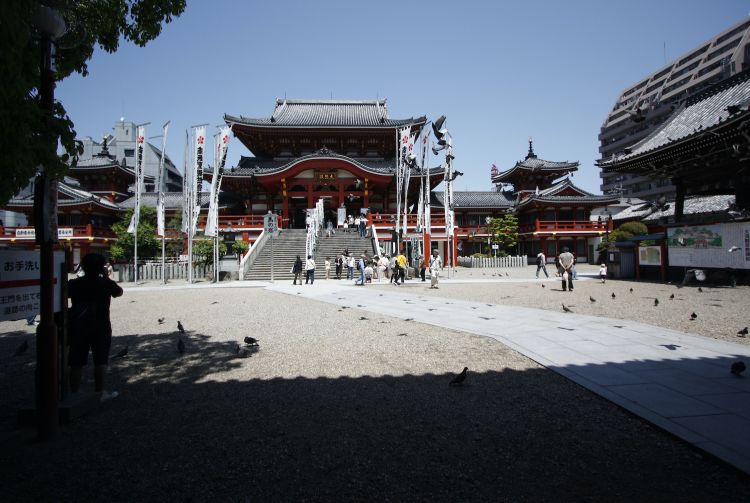
ⓒNAGOYA CONVENTION & VISITORS BUREAU
Ketenangan wihara di dalam kota
Berdiri di pintu masuk distrik perbelanjaan yang ramai, wihara berwarna merah yang mencolok ini menawarkan ketenangan dan tempat spiritual untuk menenangkan diri saat Anda melewati gerbang luarnya. Osu Kannon yang Anda lihat saat ini adalah hasil renovasi pada abad ke-20—bangunan aslinya habis terbakar pada tahun 1820-an.
Bangunan megah yang menyimpan berbagai pusaka sederhana
Titik ibadah utama di sini adalah patung kayu Kannon, dewi welas asih Buddha yang konon dipahat oleh pendiri Buddha Shingon, Kobo Daishi (774-835). Patung ini dengan menakjubkan selamat dari kebakaran yang meluluhlantakkan sebagian besar bangunan asli.
Di bawah aula utama terdapat Athenaeum Shinpukuji yang menampung lebih dari 15.000 teks klasik Jepang dan Tiongkok, termasuk tujuh salinan tulisan tangan yang diketahui tertua, kisah sejarah awal dan mitos Jepang yang disusun pada 712.
Tempat penyelenggaraan festival dan parade
Osu Kannon dan arkade perbelanjaan di dekatnya merupakan lokasi untuk berbagai acara sepanjang tahun. 3 Februari di Jepang adalah jatuhnya Setsubun, perayaan musim semi yang menjelang dan dari panggung tinggi dan besar di luar wihara, para biksu melemparkan kacang-kacangan pada orang yang berada di bawahnya untuk mengusir nasib buruk.
Pada akhir minggu yang paling dekat dengan 17 Maret, Anda dapat bergabung dengan komunitas Irlandia di Nagoya saat mereka berparade melewati arkade untuk merayakan Hari St. Patrick. Pada bulan Oktober, Anda dapat melihat berbagai seniman, musisi, dan seni akrobatik aneh, indah, dan luar biasa berbakat di Festival Seniman Jalanan Osu.
Jika Anda berada di Nagoya pada tanggal 18, jangan lewatkan pasar antik Osu yang diselenggarakan di pelataran wihara. Terdapat sekitar 60 kios yang menjual suvenir, barang antik, seni rupa, dan karya seni tiruan. Jalanan di sekitar Osu Kannon biasanya bergabung dalam acara ini dan pada tanggal 28 wihara Buddha Banshoji yang lebih modern di ujung lain arkade perbelanjaan menyelenggarakan pasar serupa serta panggung sandiwara boneka mekanis yang unik.
Berbelanja dan tempat makan di pinggir jalan
Osu terkenal di Nagoya dengan gaya alternatif dan bahkan eksentrik, menjadikannya bagaikan perpaduan antara Harajuku dan Akihabara dari kota ini. Saat menyusuri jalanan di arkade yang ramai, jangan heran jika menangkap pemandangan penduduk setempat dalam balutan pakaian jalanan yang sangat konyol tengah berbelanja untuk penampilan penuh gaya berikutnya. Beberapa di antaranya akan dengan senang hati berfoto namun jangan lupa untuk meminta izin terlebih dahulu.
Distrik ini dihuni sangat banyak toko fesyen bekas seperti Komehyo, toko suvenir, dan toko mainan dan game klasik seperti Super Potato Athenaeum (toko game bekas) dan Mandarake (toko komik manga bekas) di dekat Stasiun Kamimaezu.
Jika Anda menanyakan seorang Jepang tentang Nagoya , mereka akan mengatakan bahwa kota ini memiliki kuliner sempurna dan demikian pula dengan Osu Kannon. Anda akan melihat semua jalanan dipenuhi aroma dari beragam kedai yang menjual ayam goreng, takoyaki, kebab Turki, dan banyak lagi di setiap sudut yang Anda datangi. Bahkan ada restoran Brasil terbuka, Osso Brasil.
Pada musim panas, Anda wajib singgah di kedai es serut dan teh bubble. Ke mana pun Anda pergi, terdapat berlimpah restoran yang dapat Anda nikmati, mulai restoran anggun, bar terang benderang yang menyajikan bir spesial baru, hingga kafe tua dengan sajian sempurna kuliner Nagoya yang kaya selama puluhan tahun. Cara sempurna untuk mengakhiri hari yang dipenuhi budaya bersejarah.














